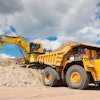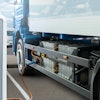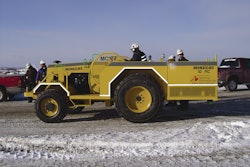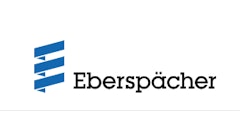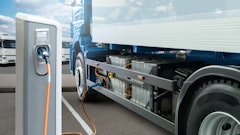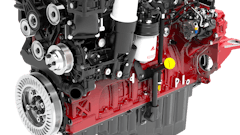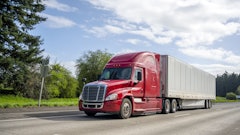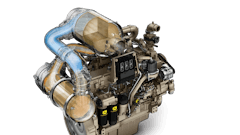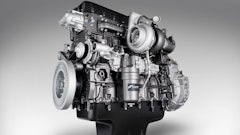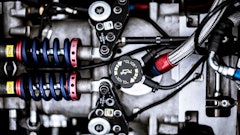Even as automakers anxiously wait to see whether the Obama Administration will allow California to significantly expand its emission regulations for automobiles, construction firms are hoping regulators in Washington and California will rethink emission rules slated to take effect next January for construction equipment.
The Bush Administration left Washington before acting on a waiver request that would allow California to regulate emissions from diesel-powered construction and airport equipment currently in use. California approved the regulations last summer, but the federal Environmental Protection Agency (EPA) must sign off on the regulations before they can be implemented next year.
Such an approval still remains likely given the election of a president who has been a strong advocate of environmental issues. But given the global economic collapse and particularly the financial devastation in California, there is a glimmer of hope that regulators will reconsider or delay implementation.
Conceding that construction regulations were developed when the state's homebuilding industry was booming, the California Air Resources Board (CARB) agreed to revisit the regulations at a public hearing in January; however, it has not yet agreed to any significant changes.
As currently written, the regulations require fleet owners to install particulate filters and other exhaust retrofits to capture particulate matter (soot). They also require owners of medium and large fleets to repower or purchase new equipment to reduce NOx emissions. The regulations will be implemented in phases, starting with large fleets (more than 5,000 hp) in 2010 and ending with small fleets (less than 2,500 hp) in 2015.
CARB has argued that the new regulations are necessary because of construction equipment's contribution to air pollution. The construction industry, however, is pushing back, arguing that financially ailing construction firms cannot currently afford to retrofit or replace their equipment. The NOx requirements, for example, may require owners to replace their fleet four times faster than normal.
Impact of a faltering economy
Not surprisingly, there is disagreement about how much the new regulations will cost. The state estimates the cost of compliance at $3.4 billion. Industry representatives say it will be closer to $13 billion.
Given the current state of the economy, either estimate may prove to be unmanageable. According to the Association of General Contractors (AGC), which opposes the regulations, the volume of construction work in California has plunged $22 billion below state forecasts. Because construction firms must engage in fierce bidding battles to win projects, they don't have money to budget for retrofits. Equipment rental companies also lack the funds they need to upgrade their fleets as they struggle to keep their doors open.
In addition, the regulations will impact construction firms' ability to get business. Because the regulations effectively make worthless any equipment purchased before 1999, they will lower the capital valuation of many firms. That would make it more difficult to get bonding, because bonding is based on capital valuation. And as the bonding requirements tighten, firms will be limited to smaller jobs.
The new regulations will also greatly increase costs associated with paperwork. All fleets, regardless of size, will be required either to meet specific fleet-average emission targets for particulate emissions or to incorporate the highest level of verified diesel emission controls to at least 20% of their fleet each year. Owners of large and medium fleets would also be required to meet fleet-average NOx emission targets. If they did not, they would have to repower, replace or retire 8 to 10% of their fleet each year. This process will require fleet managers to monitor every engine, calculate averages and send reports to the state. Industry experts claim the recordkeeping requirements alone will cost more than $65 million per year.
AGC continues to battle the regulations on several fronts. It has asked California's Occupational Safety and Health Standards Board to address concerns that the installation of soot filters will impair visibility and increase the potential for burns. It is also arguing that California's faltering economy has pushed emissions below the state's target levels making the regulations unnecessary, at least for now.
What's ultimately decided in California and Washington will have a nationwide impact. Approximately 20 states are closely watching California and Washington to see what regulators will ultimately decide. Many are expected to follow California's lead if the EPA approves the waiver.
And now that the door to in-use emission standards has been opened, regulators are ushering through similar regulations for on-highway trucks.
California's statewide truck and bus rule will require truck owners to install diesel particulate filters on most of the 900,000 trucks that operate in the state by 2014. It will also give truck owners until 2022 to replace all engines manufactured before the 2010 model year. Engines would not have to be replaced on school buses, but they would have to have particulate filters.
The state has promised financial assistance to help truck owners upgrade their vehicles for both sets of regulations, but the amount of funding is far from certain given California's budget problems.
We're just a month or so into a new administration, but one thing is already clear. Emission regulations of all types are going to be front and center in an environmentally sensitive political climate.
Dave Jensen is a contributing editor from Milwaukee, WI.

